Two weeks after Vancouver was once again named one of the most unaffordable cities in the world, Mayor Gregor Robertson has unilaterally appointed the members of the city’s “Blue Ribbon Affordability Task Force.” The fourteen appointees of the task force are drawn from a list of prominent developers, landlord lobbyists, architects, and industry insiders. There is not one person on the task force to represent renters, who are the most negatively affected by the housing crisis, and who represent 55% of the city’s population.
The task force was first announced in the Mayor’s opening speech after the re-election of Vision Vancouver in November 2011. Since November, the Mayor has been laying the groundwork and ‘terms of reference’ for the task force. The most important term-of-reference outlines how the city will carry out the privatization of Vancouver’s social housing stock, its demolition, and subsequent sale to private partners. While initially the idea was made in vague reference to “leveraging the city’s land base to help create partnerships with private and public bodies,” the Mayor has recently made it clear what the city has planned:
We’re looking at opportunities to leverage City land. Vancouver has a huge portfolio of land and buildings that we need to get highest and best use out of…What can we do with our existing public housing stock to maximize the opportunity?
The announcement of a “task force” recalls the city’s “affordable rental housing roundtable” process in 2009. In the wake of the financial crash of 2008, developers, financiers, and other stakeholders were invited to a series of workshops in the spring of 2009. The result: a report recommending tax breaks for developers in order to “incentivize” the development of rental housing. The policy that emerged was STIR, which the Mayor referred to as an “economic stimulus” for the hard-done-by development industry. Unsurprisingly, the balance sheet of the past three years shows that the tax-breaks-for-developers housing strategy delivered few rental units and literally zero affordable units of housing. It did deliver generous campaign donations from the development industry to Vision Vancouver.
Who is on the panel?
Even a local right-wing commentator has said in an online conversation with The Mainlander that he is “taken aback at how many BC Liberals/NPA folks were on [the task force].” In fact, the list of recent appointments does not come as a surprise given the track-record of the Vision council, the already-established ‘terms of reference’ of the task force, and the earlier appointment of developer and right-wing multimillionaire Olga Ilich as co-chair of the task force. A look at some of the other members of the task force will provide insights into what can be expected from in the way of recommendations, which are due June 2012.
A important appointment is the CEO of the BC Apartment Owners & Managers Association, Marg Gordon. Through the BCAMOA, Gordon lobbies for over a thousand landlords, who together own over a hundred thousand rental units. If there is one demographic who benefits most from the housing crisis in British Columbia, it is landlords. According to Gordon and the BCAMOA, there is a “significant negative gap between the rising costs associated with rental housing and the allowable rental rate increases.” Despite record low interest costs and skyrocketing rents, Gordon’s position is that either the government should give landlords more tax breaks or else landlords should be allowed to increase our rents.
Another of the appointments is Colleen Hardwick, an insider of the real-estate world and a descendant of Walter Hardwick. In 2005, she ran for a City Council position with Sam Sullivan and the NPA, receiving donations from Concord, Wall and Aquilini developments (among others). She speaks emphatically about the supposedly pressing “crisis in the consultation world.” Colleen operates New City Ventures, a self-described “corporate incubator,” which runs Placespeak, a startup already involved in the City’s “Talk Housing With Us” initiative.
Another appointee to the task force is Mark Guslits, an architect who served as chief development officer for the Toronto Community Housing Corp (TCHC). In 1999, Guslits was named the “special adviser on housing development for the city” and was in charge of building affordable housing in Toronto. Guslits’ role in addressing affordability was negligible, if not negative, and in the wake of his tenure the Toronto Star quoted the balance sheet of the situation:
The waiting list for subsidized housing stretches to 60,000 households in Toronto and 26,000 elsewhere in the GTA — numbers so high that some people die of old age before getting placed. That, combined with evictions, untold numbers of families doubling up in apartments, and thousands of men, women and children sleeping in homeless shelters, is linked to a severe shortage of affordable rental housing for low-income earners.
After failing to address affordability, Guslits was nonetheless made responsible for the TCHC’s revitalization of Regent Park in Toronto. Regent Park is an ongoing, large-scale gentrification initiative that has already seen broken promises and displacement, not to mention increased property values that are putting even more pressure on renters in the surrounding area. The stated goal of the Regent project is to limit the number of low-income people living in one place and therefore erase the “blight” they cause by their very existence. On this point, in defense of old school and reactionary planning ideology (if not outright class war) Mark Guslits is clear: areas taken over by “manifestations of low-income people living close together” must now be “returned to the city.”
Toronto’s Regent Park draws similarities to Vancouver’s Woodward’s Project, where in a “mixed” housing development the poor are cordoned off and policed away from wealthy and middle-class condominium owners. “Mix” is, according to UBC researcher David Ley, a “transitional” concept meant to pave the way for broader gentrification — as demonstrated already with the more advanced Woodward’s project. The model at Regent Park could also be compared to the Little Mountain redevelopment in Vancouver, where non-market housing projects are flattened to make way for condos. As mentioned, Affordability Task Force’s ‘terms of reference’ explicitly mention the need to assess the financial “opportunity” presented by the city’s existing social housing properties.
Nathan Edelson is a former City Planner who worked with the City for over 25 years, and who now teaches at UBC’s School of Community and Regional Planning. During his term as city planner for the Downtown Eastside, he pushed the concept of “Revitalization Without Displacement,” but has recently done a u-turn in support of the City’s gentrification plan for the Downtown Eastside. Instead of waiting for the results of the city’s Social Impacts study, he lent his voice in support of height increases and unregulated condos for an area with hundreds of low-income seniors. It is worth noting that Ray Spaxman, another former planner who instead came out against the plan, is not on the panel.
Just up the street from Chinatown is the large-scale City Gate condo development on Main and Terminal. City Gate is the project of Bosa Development, whose Vice President, Eric Martin, was also appointed to the task force. City Gate is identified as the beginning phase of gentrification of the Downtown Eastside (after Expo 86, Bosa bought up the two block parcel between Main and Quebec North of Terminal) and Bosa Development continues to be a major developer in the city.
Another appointee is Peter Simpson of the Greater Vancouver Home Builders Association. Simpson himself has already weighed in on the task force, stating: “the panel should recommend improvements to the snail-slow approvals and permitting processes. It remains to be seen if blue ribbon can trump red tape.”
Other members of the task for include Alan Boniface (behind local gentrification projects like 3333 Main and the False Creek Olympic Plaza, and further away from Vancouver, large-scale development projects in China) and Al Poettcker, President & CEO of UBC Properties Trust. Poettcker is a significant pick because he represents one of the few gentrification projects in Vancouver defeated by the political organizing of activists. Five years ago UBC Properties Trust tried to build a $40 million dollar underground bus loop that was supposed to take visitors and students through a mandatory shopping mall before entering the campus proper. Students and faculty fought against the aggressive commercialization of the campus core and won the fight.
The only possible voices of opposition we can foresee on the panel are Kenneth Kwan, with SUCCESS, and Michael Lewis, Executive Director of the Canadian Centre for Community Renewal — neither of them however, are connected to the political organizing of low-income people across the city, and it is likely that their voices will be drowned out by the dozen big players who want to maximize profits and political capital for the development industry.
In short, the Housing Affordability Strategy is a gentrification strategy. Existing affordable housing, whether SROs in the Downtown Eastside of low-income apartments in Mount Pleasant, will be planned for demolition, erased to build housing that is affordable for young urban professionals. In his press release, Mayor Gregor Robertson said: “Vancouver must be a city where our children can afford to live and raise their families.” If Vancouver continues along its current path, it will only be the children of the rich inheriting their down-payment and legacy of displacement who can afford to live in this city. As long as the status quo remains in place for the coming years, the frontline of the housing struggle continues to be against the property-owning class and their political parties.
Photo Courtesy: Ariane Colenbrander



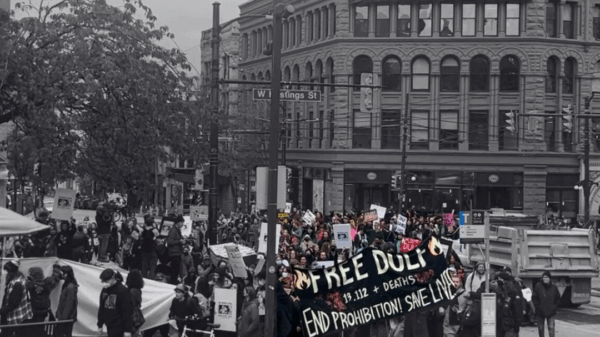
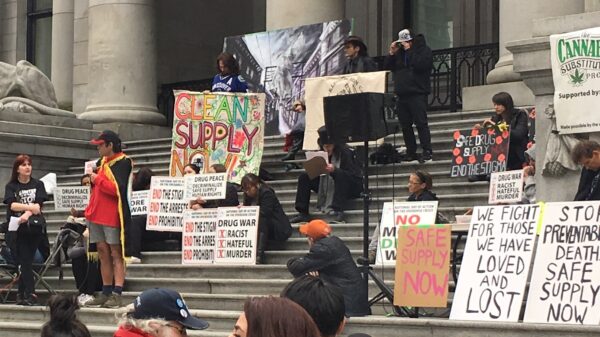

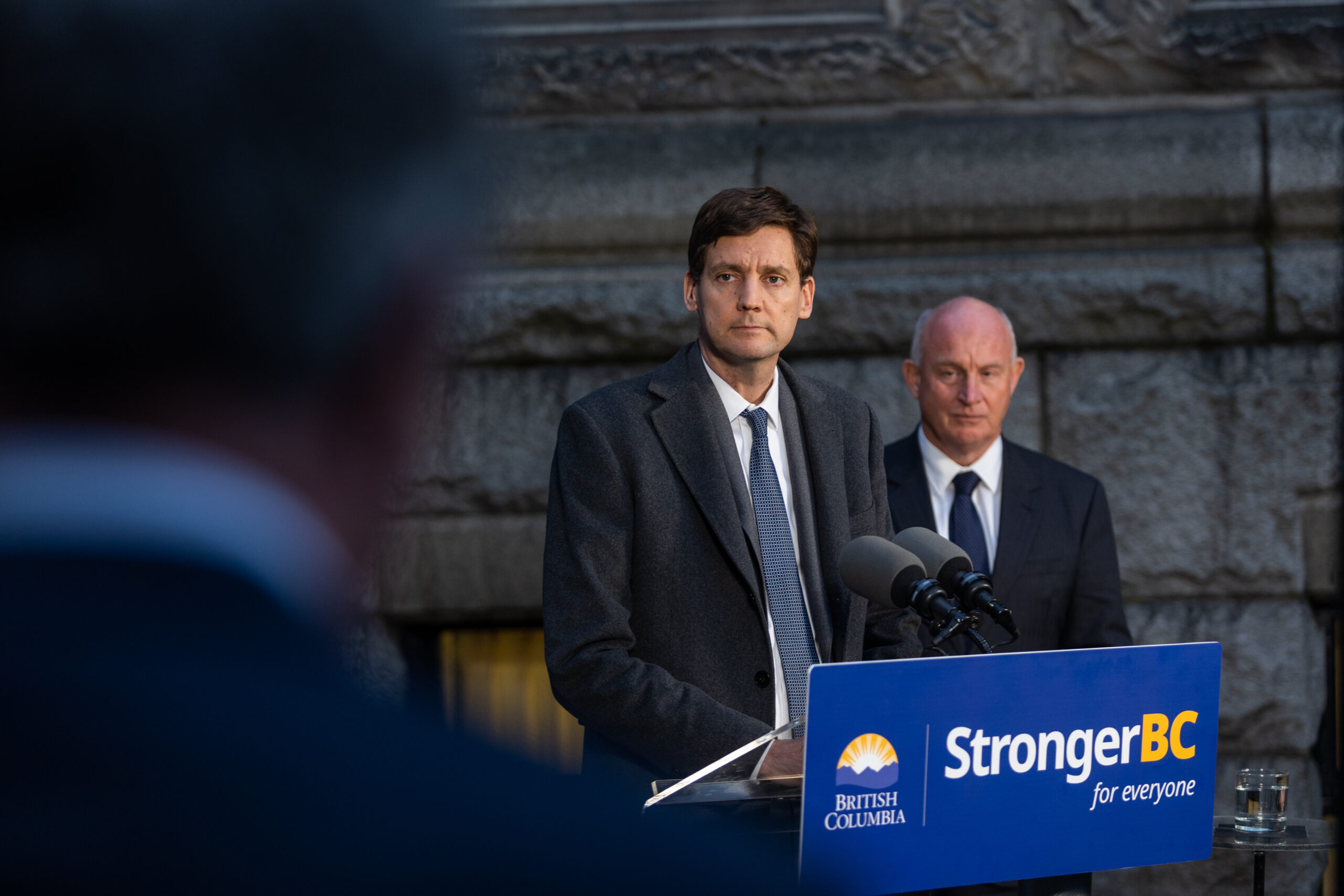


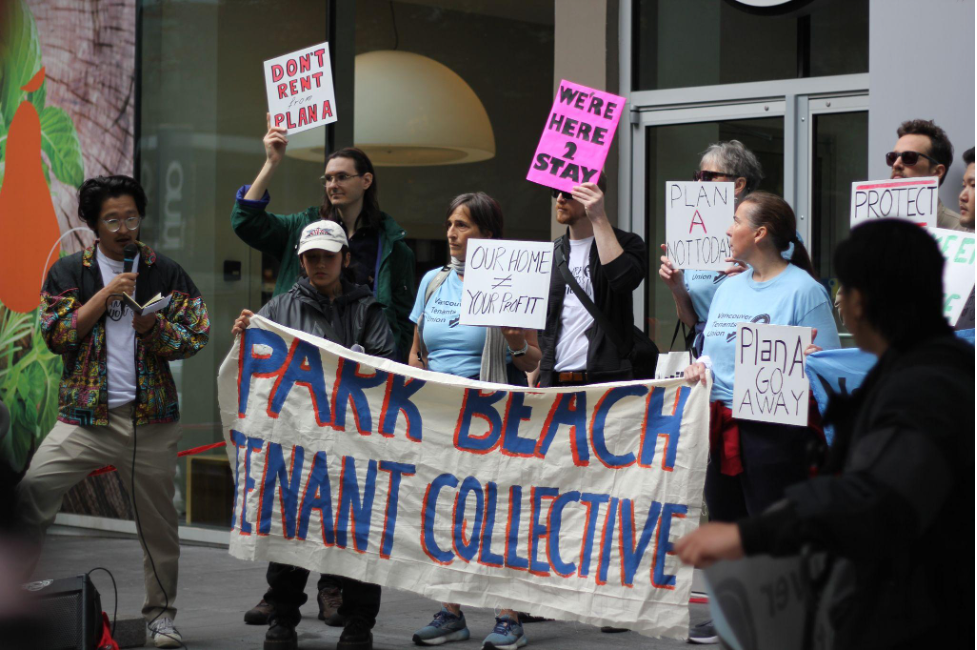




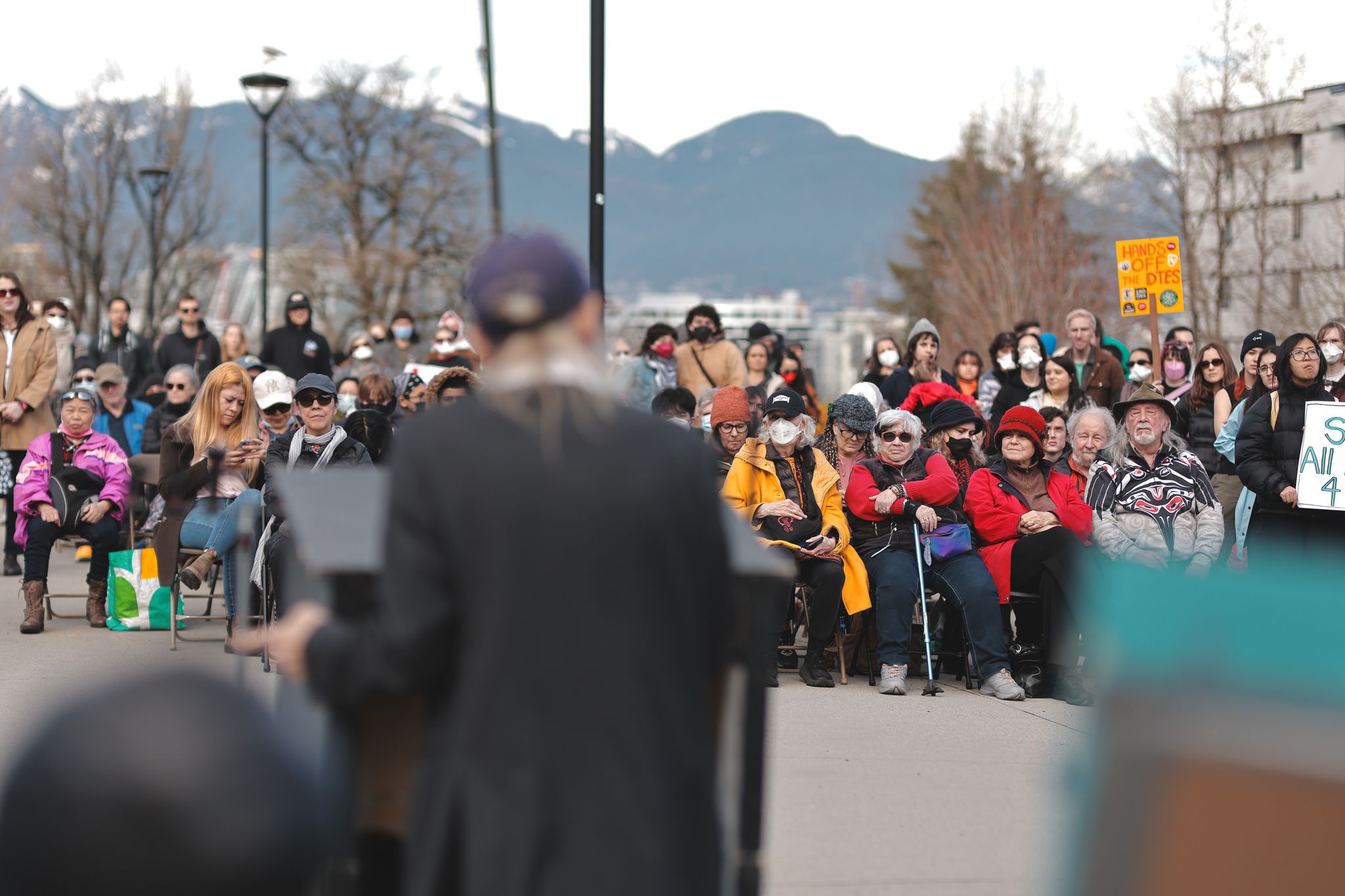


slantendicular
February 7, 2012 at 8:58 pm
Well done analysis of the appointees. You’re a knowledgeable bunch.
Colleen Hardwick
February 7, 2012 at 10:36 pm
Dear Mainlanders;
Would you be so kind as to fact-check your remarks about me? My company, New City is not associated in any way with the Urban Futures research company that you refer to in your blog. The truth is that I am incubating (i.e. internet start-up in my basement) a location-based public consultation platform called PlaceSpeak. The coincidence is that I am reprising the seminal “Greater Vancouver Urban Futures Opinion Survey” which my father, the late Dr. Walter Hardwick, conducted in 1973 and then again in 1990, this time online with PlaceSpeak. The names are similar but they are simply unrelated. Incidentally, this broad-based public research informed the creation of the “Liveable Region Strategic Plan” and the later the “Choosing our Future” process in the region. I welcome you to take 20 minutes and complete the Urban Futures Survey and help contribute to almost 40 years of longitudinal analysis at http://www.placespeak.com/urbanfuturessurvey. One more thing: I am not an “insider in the real-estate world”, rather I am an urban geographer who has spent much of her career in the film industry, which is a matter of record. I did, however, volunteer for several years on the City’s Development Permit Board Advisory Panel but that hardly qualifies me for the “star chamber”. If you’d like to set the record straight, it would be my pleasure as I am passionate about the crisis in the consultation world, as you observe.
Best regards, Colleen
Sean Antrim
February 7, 2012 at 10:55 pm
We’re very sorry for the error. The article has been updated. Please understand our confusion that there are two companies who perform similar functions in the same City with the same name, both connected to Bob Rennie. Thanks for pointing this out and we will do our best to avoid any similar mistakes in the future.
Colleen Hardwick
February 8, 2012 at 10:00 am
Thank you for acknowledging the error, Sean. I must admit I was kind of shocked when I read your article. While I do know Bob Rennie and did ask him to do a Public Service announcement in connection with the Urban Futures Survey, that’s as far as the association goes. I also asked musicians, actors, media personalities, athletes, restauranteurs, politicians, architects and other notables to do PSAs to help create awareness. To be clear, this in non-profit research that will inform future planning in the region. My objectives are entirely honorable. This particular UFS project is also an homage to my father.
In any event, now that we have that cleared up, I hope to be positively contributing to the Housing Affordability Task Force, particularly in the context of public consultation and look forward to an ongoing dialogue. Best regards, Colleen
Sam Bentall
February 8, 2012 at 4:21 pm
You didn’t mention Karen O’Shannacery. What is your feeling about her appointment?
Mark Guslits
February 8, 2012 at 7:35 pm
Interesting analysis Sean.I have a rather long comment on what I read. I hope you’ll see fit to print it all. I’m the Toronto guy on the Task Force who, apparently, has been such an abysmal failure at what I do – which is to facilitate the creation of more housing affordability in the cities in which I’ve worked over the last 25 years. I suppose the Mainlander is entitled to be as journalistically in error as the Toronto Star is, but I thought it might be useful for your readers to read another view of what has and is happening in Toronto related to affordable housing. Firstly, under the city driven housing generation program which I ran for 4 years, over 2000 new units of social housing were created in Toronto at well below market rental rates with built in long-term affordability. All with little or no Provincial or Federal funding. The right wing on Council eventually killed the program, but not before many deserving under or ill housed families and individuals – were properly housed. My subsequent 5 year run at TCHC resulted in over 3000 new units of affordable rental, and subsidized housing being built. Regent Park, the largest of the many new TCHC driven developments under my direction, is viewed as an unequivocal success by both the right and the left, and internationally heralded as a state-of-the-art urban regeneration (not gentrification). Where there were 2000 units of run-down, virtually un-livable housing built in the 1950’s with no amenities whatsoever for this population of 7500, there now will be 5000 units of new housing (along with new shops, banks, a non-profit community theatre facility, a new community swimming pool etc). Every tenant was met with dozens of times during a 2 year long community engagement process (not like Little Mountain at all), to determine where they wished to live after their 2 years of temporary re-housing in near by TCHC owned affordable housing (so their kids could stay in their local schools). All were guaranteed new units to house the size of family that they had (If they were now living in a town house – they got a new townhouse) and all were given the option of moving back into Regent Park – their home of many years. Approx.20% opted to move to other new affordable buildings being purpose built in the downtown area specifically for them. The other 1800 lo-income families (approx 6000 people) have either moved back, or will soon move back, into state of the art condominium quality buildings and townhomes – all subsidized to ensure that the families pay no more than 30% of their annual income for rent. And they are built amongst 3000 new market housing units that were (or will be) sold at or below market rates (and over 300 units at well below market rates directed at Regent Park residents who wish to take a shot at home ownership). Having now met with many of the lower income families newly re-housed in Regent, I can safely report that they are, uniformly, ecstatic about their new mixed income/mixed tenure neighbourhood. Many can’t believe this has actually happened. The press has been uniformly positive. The surrounding up scale Cabbage Town community loves the new adjacent neighbourhood and now walk through an area daily that they would have scrupulously avoided up until now. Low income renters in colourful dashikis, sari’s and niqabs and upper income well-shod Regent condo owners drink their double-doubles at adjacent tables at the newly opened Tim Horton’s and shop for their bok choy together at the newly opened, wildly successful Sobeys grocery store. And 100’s of local Regent Park residents are being employed in the construction and in the bank, Sobey’s, Tims etc. (This is a mandatory requirement for any one building at or operating a commercial facility in Regent Park – they must hire as much as possible, locally). Well, I could go on, but I think you get the point. And I will fly 5 hours back and forth, many times over the next few months, pro bono, to try, with my fellow Task Force members, to bring the opportunity for the same type of affordable housing success to Vancouver if I can. Call me crazy, but I just can’t see which part of this is a bad thing.
Sean Orr
February 12, 2012 at 1:56 pm
Who would you rather see on the task force, or is it the idea of a task force alone what you take issue with?
Sean Antrim
February 12, 2012 at 8:18 pm
I would have rather seen some renters, a housing economist or urban geographer, activists who are fighting against the current government for affordable housing, etc. COPE released a press release suggesting people from the DNC, WERA/WEN or TRAC. I think we’re going to write some sort of a follow up that covers some of the people who applied but didn’t get accepted, which should answer your question better.
Bill McCreery
February 13, 2012 at 10:29 pm
Thank you Mark Guslits for your time and financial commitment to assisting the City of Vancouver in its quest for affordable housing. Your experience, in fact, offers one of the best opportunities for viable and creative affordable housing solutions. I look forward to hearing more of your recommendations.
slantendicular
February 15, 2012 at 8:16 pm
Mark – Thanks for taking the time to respond on here to provide that context. As a reader, I appreciate it.
Mark Guslits
February 15, 2012 at 8:57 pm
Happy to try and add some positive notes in an attempt to balance the generally negative take on the Task Force in this blog . It’s a difficult mission to try and provoke practical and do-able directions for a large complex City such as Vancouver, given its particular affordability dilemma. I would not have agreed to join the Task Force if I didn’t feel there were committed, knowledgeable people at the table with a genuine desire to try and deliver some positive outcomes. There could always be other minds to be brought to bear on the issues and other agendas deserving of being heard – but the people now at this table, convened by the Mayor,are, for better or for worse, the team that are examining this currently. They have largely set personal and political agendas aside in favour of just trying to help the Mayor and the City address housing affordability challenges as swiftly and efficiently as possible – and with a genuine respect for the people that are in need of these housing solutions. Some positive support such as that in your comment is much appreciated. Thanks. Mark
Ripley
February 16, 2012 at 7:11 pm
It is so incredibly strange that you call the cancelled underground bus loop at UBC a “gentrification project”. The residents of the UEL and UBC students (especially when taking future earnings into account) aren’t exactly impoverished.
WjNd
March 3, 2012 at 5:03 am
I live directly across from the proposed block 23 (bounded by Shuter, Sackville and Sutton). It is now being demolished to make way for a new building encompassing this whole block. What was originally proposed , townhomes 3 to 4 stories was amended through a height zoning application to change this into an 8 story structure. We successfully challenged this and the buildings height was reduced to 6 stories. Still it is not in anyway compatible with the surrounding existing structures.The meeting I attended for the height renewal application was the only one in which they called upon the community for input into Phase 2.What they propose to build on block 23 is a mystery. The TCHC planners with the Daniels group have had one meeting to discuss what type of building this should be, Market, Rent Geared to Income or other type. The meeting was inconclusive .The criteria for these decisions are another mystery.I had asked the planners office at TCHC if they could hold a community meeting to gather input from surrounding homeowners. They stated that they are not obligated to have one.TCHC has repeatedly stated that they are always cognizant of the bordering communities and want to work with them. I feel that I and some neighbours are being ignored.If you want to have some input into your neighbourhood’s development and share your opinions about block 23 call the Regent Park Project Manager’s office. 416-981-5054Or Pam McConnells office: Shawn McIntyre, 416-392-0207
Mark Guslits
March 3, 2012 at 9:03 am
Having left TCHC almost 3 years ago I have no idea as to how they are currently handling matters such as those you raise here. I have taken the liberty of forwarding your comments to the Director of Development at TCHC. The issues you raise are important and hopefully people at TCHC will address your concerns in the coming weeks and months.